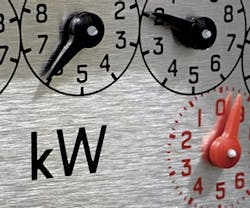Dramatic Rise in Demand Response Adoption
As building owners seek to curb peak energy costs, demand response (DR) programs are gaining significant momentum. The number of commercial facilities participating in DR programs worldwide will rise from fewer than 600,000 in 2012 to more than 1.4 million sites by 2018, according to a new report from Pike Research.
The majority of commercial customers implementing DR programs have traditionally been large companies and institutions, but small and medium-sized businesses are flocking to energy flexibility in greater numbers.
Energy usage in commercial buildings is particularly significant during the peak times of summer and winter, when HVAC systems place heavy demands on utility power grids. To achieve real-time energy control, FMs are turning to automation technologies, smart metering, and building management systems.
The increasing use of automated demand response and open standards-based communications capabilities is enabling energy providers to offer more sophisticated forms of DR programs to commercial clients, such as dynamic pricing and ancillary services.
Do you use a demand response program? Share your experience with DR by emailing associate editor Jennie Morton at [email protected].
